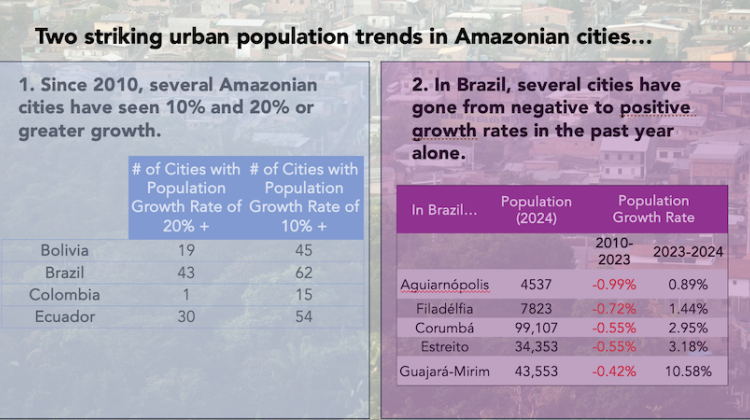Urban Climate Finance for Rapidly Growing Amazonian Cities

Despite a diverse and complex host of public and private financing sources supporting climate mitigation and adaptation actions, scholarship knows little about how well cities and subnational groups in the Amazon region fare in securing funds to tackle the intersecting crises of climate change, urban poverty, Indigenous displacement, and their implications for urban development. Research on urban climate adaptation in the Amazon region is scant, with scholarly attention directed towards the ecological impacts of rainforest replacement in tropical forest frontiers. Scholarship has primarily focused on biodiversity, climate change, hydrology, and hydropower within the region. Notable exceptions include research by Inoue (2012) on Amazonian municipalities, Malhado (2017) on climate governance and regulatory frameworks for agricultural expansion, and Londres et al. (2023) on place-based sustainability initiatives led by local grassroots organizations with extended engagement in the Amazon.
Building on this body of scholarship, we examine the landscape of institutional climate finance available to and accessed by subnational and municipal governments, as well as Indigenous groups in the Amazon biosphere, with a particular focus on understanding those who have successfully secured funds. We explore which projects get financed, from what institutional sources, and which communities and geographies climate finance ultimately reaches. Drawing on a novel dataset comprising financial data and projects financed by twenty climate finance funds and environmental, socioeconomic, and geospatial data, we analyze the interscalar and urban governance of climate finance in the region, identify characteristics among sub-national and city governments and Indigenous groups that have accessed climate finance, the nature of climate projects financed, and the technical aspects of that finance in explicitly addressing the Amazon region’s urbanization and climate change challenges.
As part of our analysis, we employ geospatial techniques that reveal the paucity of publicly available government data and reflect on the data politics of spatial analyses that locate and identify Indigenous territories. Although there has been significant progress in monitoring bioclimatic uncertainty and deforestation using geospatial techniques, information gaps persist, especially when it comes to up-to-date information on rural urbanism, extended urbanization, and proto-urbanism as emergent fields of research on the colonization of new human settlements in the region, with explicit state intervention documented in Brazil and Ecuador. Our study provides key recommendations to institutions financing climate adaptation in the region to better ensure climate finance collaborations are attuned to the needs of subnational governments and Indigenous groups as they confront rapid urban growth, dynamic and cascading climate stress, and environmental inequities across rural, peri-urban, and urban areas in the Amazon biosphere.


